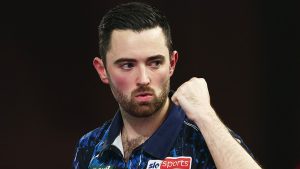Australia may elect its seventh leader in just over a decade as election called

Morrison, a former Tourism Australia director, and his center-right Liberal National Coalition government are seeking re-election on a platform of tax cuts and economic stability.”At this election there is a clear choice. It is a choice that will determine the economy that Australians live in, not just for the next three years but for the next decade,” he said at a press conference announcing the election.The prime minister, who came to office following a bruising intra-party putsch in August last year, faces a fierce challenge from the opposition Labor Party, led by former union leader Bill Shorten.Labor’s platform of climate change action and greater spending on health and education has so far resonated with voters. The coalition government hasn’t been ahead in any poll for more than a year and in a national Newspoll in early April trailed Labor by 52 to 48.In fact, Morrison is in a precarious position even before voting begins. After losing multiple seats to resignations, his Liberal National coalition has been forced into minority government and will need to win additional seats to retake majority power.The most high-profile resignation was that of former Prime Minister Malcolm Turnbull, who quit after his party stripped him of his role as leader in August. Former foreign minister and one-time leadership contender Julie Bishop followed shortly after him.Australian political experts said Morrison faces an uphill battle and the public might have already stopped listening.”A lot of hostility is now locked in, reinforced by the general disillusionment with politics. There is a feeling that people are just looking to move on from ‘this lot’,” University of Canberra professor Michelle Grattan said in the Conversation on April 4.Political chaosAustralia has two houses of parliament — the House of Representatives and the Senate. To win power, an Australian government must get a majority of the 151 seats in the House of Representatives.No Australian prime minister has faced re-election in 12 years, since former longtime leader John Howard lost the 2007 election to the Labor Party’s Kevin Rudd.Rudd was dumped by his party shortly before the 2010 election and replaced with Julia Gillard, who became Australia’s first female prime minister.But Gillard’s time in power was rocky. She was unexpectedly forced into minority government in 2010 and then rolled by Rudd in a vengeful partyroom spill in 2013. ]]]]>]]>Rudd then went on to lose the 2013 election to former trainee priest and boxer Tony Abbott, who ended six years of Labor government with the promise of stability.But Abbott, an arch conservative, proved unpopular with the electorate. He was soon dumped by his party as well and replaced by Malcolm Turnbull in 2015. Turnbull found himself removed from power and replaced with Morrison less than three years later in 2018.The political chaos has become a joke inside the country. There were reports after Turnbull took power in 2015 that paramedics decided to stop using the question “Who is the Prime Minister?” to test patients’ mental capacities, as it was getting too hard to remember.In comparison, Labor leader Shorten has been a beacon of stability. He has led Labor since their election defeat in 2013, making him the longest-serving major party leader in Australia for 12 years.Whether he can win and then survive the merry-go-round of Australian leaders remains to be seen.Far-right party dilemmaAustralian voters will also pass their verdict on a number of far-right insurgent parties who have gained prominence in the past three years.Senator Pauline Hanson’s One Nation party, which won four seats in the Australian senate in 2016, is currently polling at about 7% of the electorate according to Newspoll, higher than its result in the past election.Australia’s election comes in the shadow of twin terrorist attacks in Christchurch, New Zealand, on March 15. The alleged shooter, Australian Brenton Tarrant, released a lengthy manifesto filled with anti-immigrant, anti-Muslim sentiment shortly before the attack.The attack has raised questions about the rise of anti-immigrant sentiment inside of Australia, especially in regard to Muslims. At the 2016 election, Hanson ran on a platform which included drastically cutting immigration and placing security cameras in Australian mosques.Other parties have been formed to compete for Hanson’s votes, including a party led by Senator Fraser Anning, whose controversial comments blaming Muslim immigration after the Christchurch shooting made headlines around the world.If successful, both parties could draw votes both from the center-right Liberal National coalition as well as traditional blue collar Labor voters.






